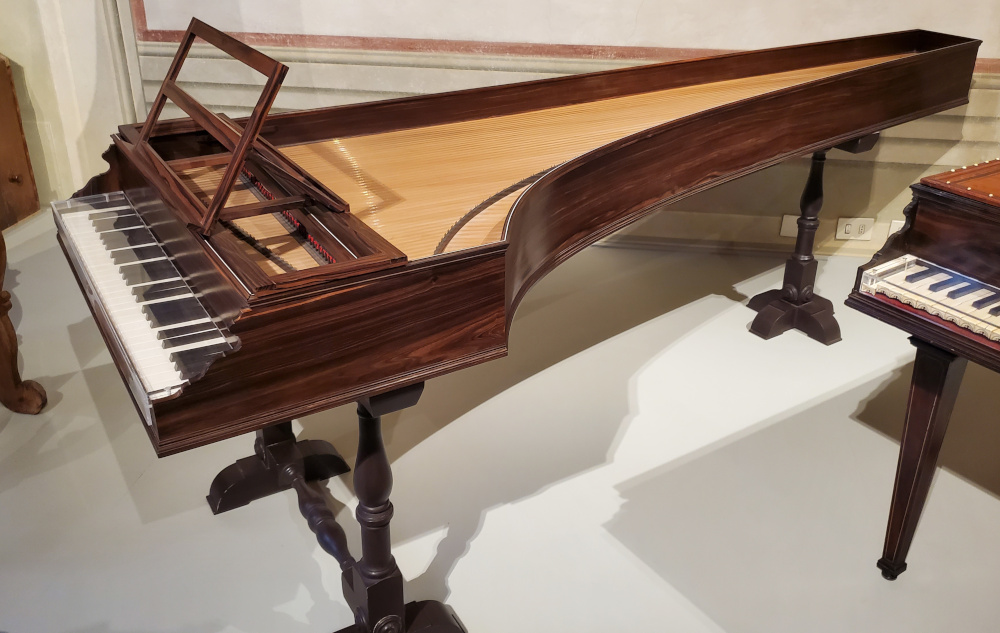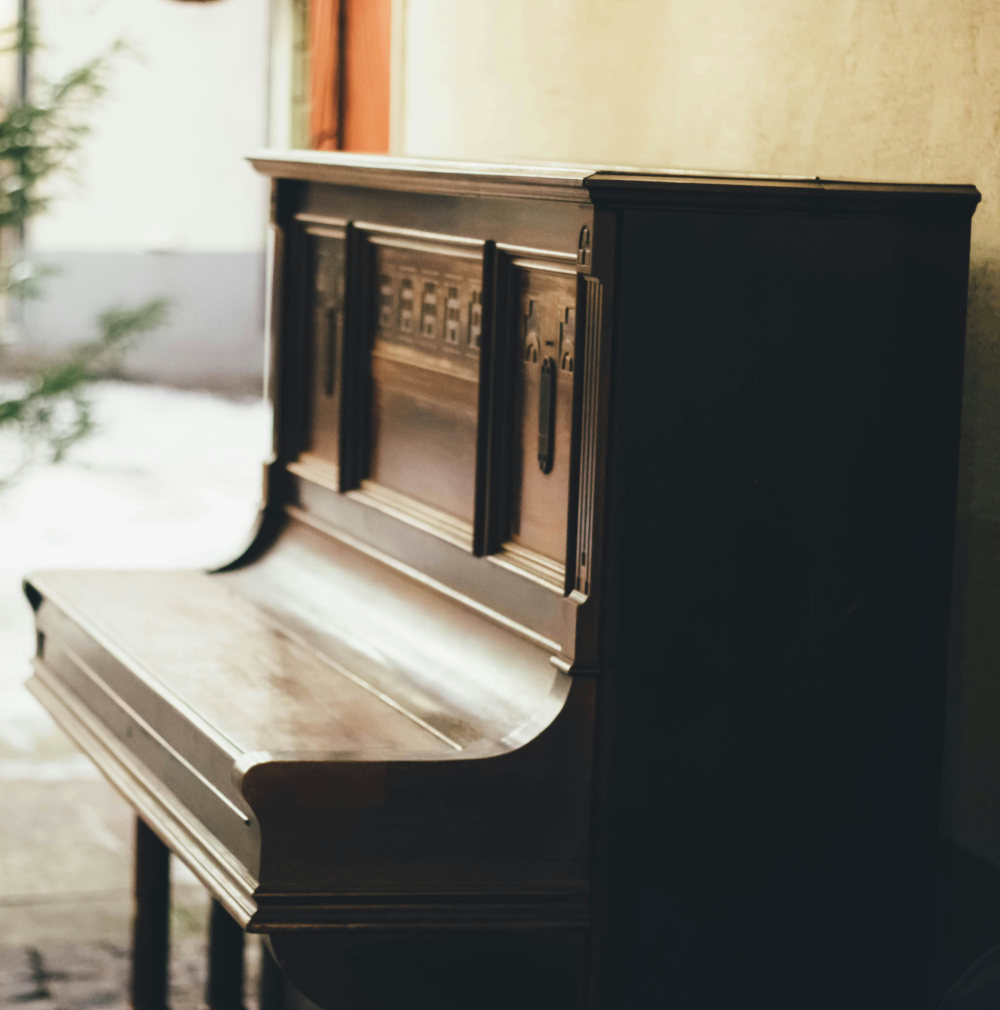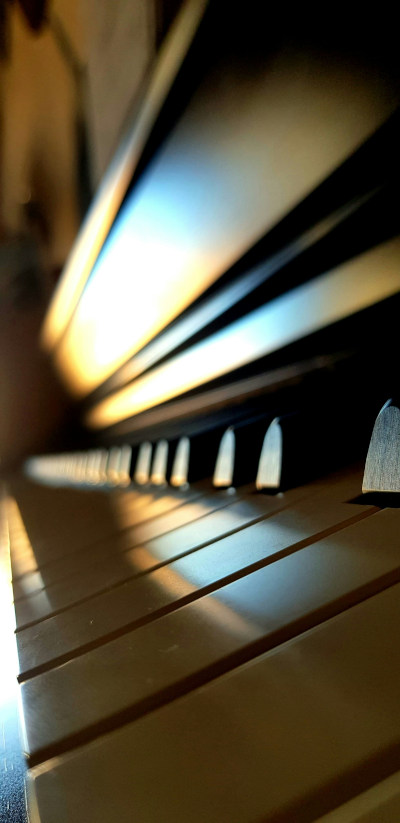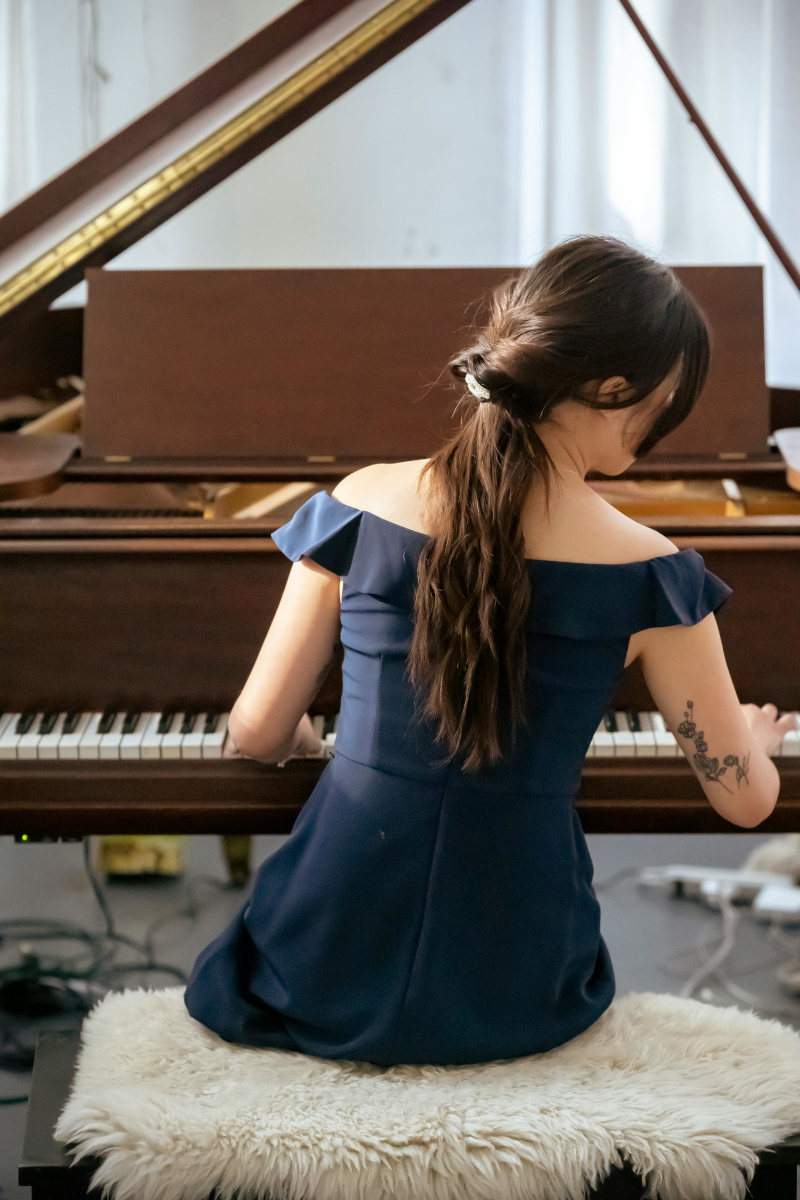The value of a piano is obvious ~ it’s the music that you make with it. But often, families are going through life changes which involve a house move and unfortunately, the piano needs to be sold. They invariably ask the question, “What are we going to do about the piano?” This question comes up because, as you can imagine, they’re not easy to move. We don’t simply pack them away in a cardboard box with the rest of our belongings. We live in a world in which monetary value is attached to objects. And despite the fact that it’s difficult to put a price on objects of beauty and art, life necessitates that we do. I receive emails almost daily about the value of pianos and so I deemed it appropriate to shed a bit of light on the subject from my observations over the past 30 years.

There once was a time when pianos were the most prized family heirloom in the house. When travelling to Italy this summer, I had the opportunity to see keyboard instruments dating from the 1600-1700’s (pictured above). Interesting to note is that these instruments were scarce and commissioned by high-ranking, affluent individuals. Fast forward a few hundred years and in the early 1900’s, pianos became commonplace and were the entertainment center in the home around which everyone would gather to listen. It required some priority to allocate funds to achieve the means to even purchase a piano. Truly, pianos were considered a family heirloom.
 But this inherent value has all but faded within my lifetime. The hand carvings, the craftsmanship, the exotic cuts of wood have all been overshadowed by a fast-paced, disposable world where these old ‘relics’ are all but forgotten. And it’s not only the century old pianos that have changed in value. The modern-day era pianos are also often sold “for a song”, casualties of people downsizing and changing location. But does this render them worthless? Or is there intrinsic value left? And if so, how much? Those are the questions for today.
But this inherent value has all but faded within my lifetime. The hand carvings, the craftsmanship, the exotic cuts of wood have all been overshadowed by a fast-paced, disposable world where these old ‘relics’ are all but forgotten. And it’s not only the century old pianos that have changed in value. The modern-day era pianos are also often sold “for a song”, casualties of people downsizing and changing location. But does this render them worthless? Or is there intrinsic value left? And if so, how much? Those are the questions for today.
Before we go further, you might want to read our article entitled How Old Is Too Old? This article talks about the different stages of pianos as they age. While you may think that your century-old piano is as good as new, over time, all parts wear down, compress and the functionality and tonal qualities change. Also, piano science (a term that doesn’t get a lot of air time, does it?) has changed drastically with the implementation of computer aided design and manufacturing tools. If you want to read that article, it might help in understanding some reasoning behind piano values in the remainder of this article.
First off, let me go on record to say that I will be describing general trends. That said, there are always exceptions to the rule. And general trends also differ slightly from one location to another.
 Century-old pianos
Century-old pianos
I hate to be the one to tell you that there is little, if any monetary value left in original condition, old pianos – pre-World War 2. This covers pianos built between 1850 to about 1940. They can be beautiful, they can be adorned with intricate carvings, they can have prestigious provenance but the fact remains, they are simply old. You can install new parts, you can refinish the cabinet and indeed that increases the value somewhat, but the fact remains, they are no longer deemed valuable. The public jury has weighed in and where I live, you can find free pianos every day of the week.
Upright Piano Value – FREE to $500 in original condition. Sometimes up to $1000 if they’re beautiful. Maybe $2000-$3000 with other work done.
Grand Piano Value – Range from $500-$3000 in original condition.
Exceptions to the Rule
Someone once told me that there are only 2 types of pianos that get restored: Steinways and Grandma’s. Steinway, being the most pre-eminent name among builders can be completely restored and compete with modern pianos. Adding to Steinway are a handful of other “godfathers” of the piano legacy brands that often get rebuilt. They are from Europe (mainly Germany) and include Bösendorfer, Schimmel, Sauter, Seiler, C.Bechstein, Blüthner, and Steingraeber. Prices vary greatly and need to be reviewed on a case-by-case basis. Value is determined by how much work has been done.
Pianos from 1940-1970
These are odd years. Manufacturing took a turn and the general trend was to build very small and compact upright pianos. Done away were the enormous pianos of the 1920s and 30s. Ushered in were the new mid-century modern uprights that were coined “apartment” sized instruments. I have to say that musically, they are lacking because it became a product of too short to have good sound and too small so that mechanically they can be a bit of a nightmare. Now that they’re 55-85 years old, they are in need of parts and fixing up but the upright pianos from this era are not worth investing substantial dollars into.
I have, however seen some great grand pianos from this era. While larger grands can be beautiful, the proliferation of baby grands spread like wildfire. Similar to upright pianos, tone and touch were compromised by size.
Upright value – Free to $500
Grand value – $2000 to $6000
Exceptions – The aforementioned legacy pianos: Steinway, Bösendorfer, Schimmel, Sauter, Seiler, C.Bechstein, Blüthner, and Steingraeber. Added to this list would be Yamaha and Kawai pianos. In original condition, these all could fetch $5000-$25,000 depending on model. Restoration adds value to these grands.
 Pianos from 1970 to Present Day
Pianos from 1970 to Present Day
Here’s where things get trickier to evaluate. Pianos that span the last 50 years can look and feel nearly new. A well cared for piano that’s been hardly played could feel like it just came off the showroom floor. There are so many different brands and models, it is impossible to put a price tag on all makes and models, but there are some guidelines which seem to have held up over time.
The Rules of Piano Value:
1.The Dividing Line
A dividing line that separates many pianos and determines value is this: piano companies that are currently in business versus piano companies that are out of business. Piano companies currently in business retain more value that companies out of business. There seems to be a psychological factor that companies that are no longer in business are worth less because their pianos weren’t any good and natural attrition occurred. That is not always the case. It’s not always due to the product quality that companies discontinue. Regardless, the VALUE is drastically diminished on pianos brands that are discontinued. Often times, these pianos are valued between FREE and $1000 for uprights and grand pianos between FREE and usually $3000 but could fetch higher.
2.New Versus Nearly New
A used piano will ALWAYS be less expensive than a new piano. If you’re a buyer of a piano and you are weighing out the pros and cons of buying new or lightly used, there must be some financial incentive to buying a used instrument, correct? If, for example, a brand new piano is $20,000 and the exact same brand and model is available that’s 5 years old, you wouldn’t expect it to be $20,000 for the used one otherwise why not just buy it new? There must be some benefit to purchase the used piano over the new one. I’ve noticed that gently used pianos fetch somewhere between 50% and 80% of the new value depending on age.
3. Comparable Pianos
This is the most significant point when it comes to determining value. When selling a house, value is determined by analyzing previous house sales that are similar in kind, similar in location and similar age. When you evaluate a brand and model of piano, there’s a good chance that someone, somewhere has sold one. And there are several places to look at comparables: Facebook Marketplace has dominated the field for the last 5 years. Ebay.com and Craigslist.com historically have been good sources. PianoMart.com also has many pianos listed as well. Please bear in mind that the LISTING price is not the SELLING price. It reflects what people are advertising their piano for. Often looking at how long the piano has been up for sale is revealing. Sometimes the ads have written “Listed for 3 months” or “Listed for 12 hours”. There is a good chance that after listing a piano for 3 months and it hasn’t sold, it’s either over-valued, there’s something wrong with it, or the location is in the middle of nowhere.
4. Location, Location, Location
This brings me to my final point on piano value: location. Sometimes there are absolute gems of pianos that are not known locally. They are undervalued because no one knows the names. It’s good to know historically which pianos are considered exotic. Sometimes you will find one for sale at a very reasonable price. Alternatively, isolated places sometimes can’t get pianos in remote areas, and subsequently, values are higher. All that to say, pianos vary from one location to another.
I hope this gives you some ideas for both buying and selling. It’s worthwhile looking at context – find the comparable pianos and be willing to look further afield. It might reveal value and give several examples from which you can glean the necessary information that you need. When in doubt, contact a local piano technician for help. Professionals in the field generally know the lay of the land, what brands to stay away from and which ones might be a money pit. They could offer some good advice and end up saving you hours of heartache.